

This the first real program of some size I wrote on the C128, in 1986. It's a drawing program. I didn't use it much because it didn't support multicolor mode. It was largely inspired by Doodle.
It included one (my first) piece of assembler code. This was to draw a grid so you could see where the character boundaries were which was important because you could only have 2 different colors in every character (8x8 block).
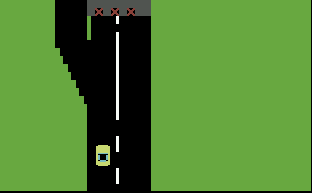
(for non-dutch speaking audience, 'spel' just means game, so much for originality)
This was indeed the first game I wrote. Moving a sprite (car) left-right and scrolling the text screen downward, woohoo.. And don't even touch those white stripes on the road, you will collide, your car will crash and you have to start over :-D
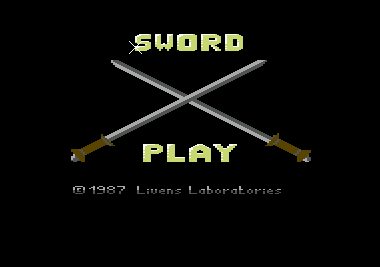 | 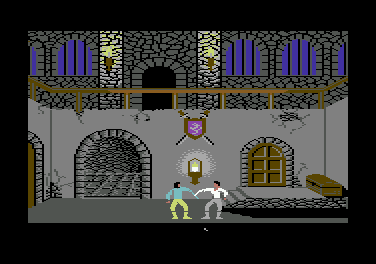
|
Amazed by the swordfight in Pirates!, I tried to clone it. With moderate success, the speed of BASIC turned it into a more medieval pace but it was playable. The sprites were easily stolen from Pirates itself, the backgrouds (only one, the best, shown) were days worth of pixeling.

When Tetris was hype, I didn't have it on my commodore, so I wrote one, cloning what I think was the first version on the PC (EGA mode). This was my first game written in assembler.
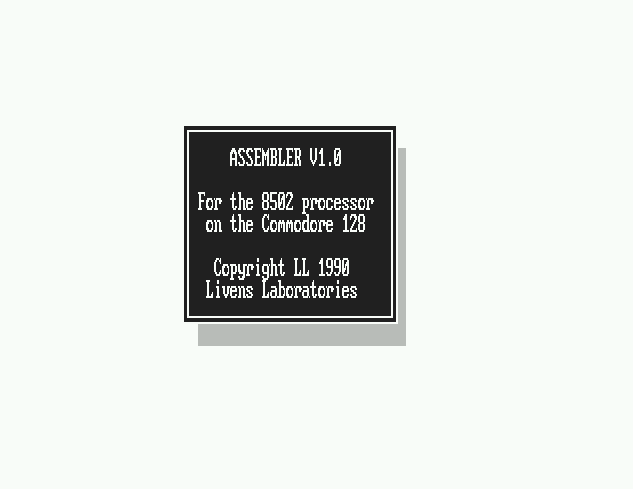 | 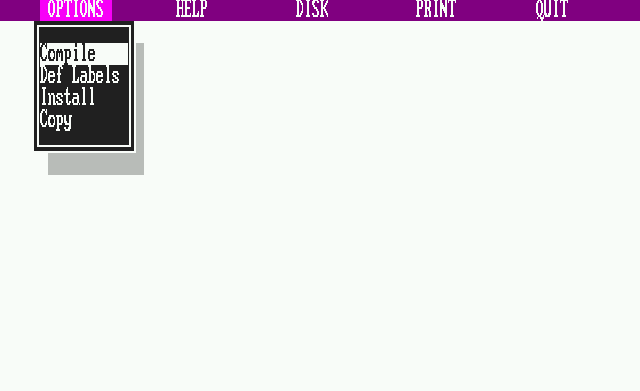
|
By 1990, I was enough skilled in assembler that I wrote almost anyting in it except for intros, loaders etc. But the built in monitor became too limited, I wanted labels so I didn't have to write everything on paper first and correct the forward brach instructions with the correct address afterwards and especially inserting instructions was a real pain, having to move blocks of code making sure all JMP's and JSR's to the moved block are corrected as well. I didn't have anything available (esp. not for the 128) so I wrote one myself. It included an editor which was trailblazing fast as it stored your text in screencodes including blanks! The assembler itself ran in two stages to resolve the lables.
Note in the screenshots that this is VDC 80 colomns screen with my own 8x12 charset to mimick an EGA PC. I wrote routines (in assebler ofcourse) to draw text-mode 'windows' with drop shadow and even pull down menus.
At the time of writing I haven't actually been able yet to run the editor/assebler again, the screenshots were from some incomplete backups.

One of the finest games I wrote, it included not too dumb AI. It's perfectly playable, except a bit slow. The world map is again hand-drawn (I learned a lot about geography doing that). The year was 1989.
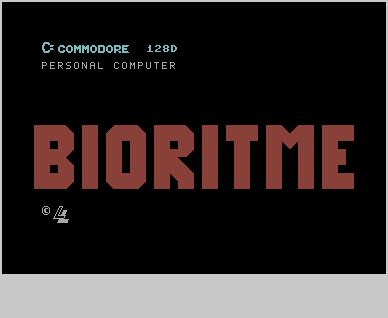 | 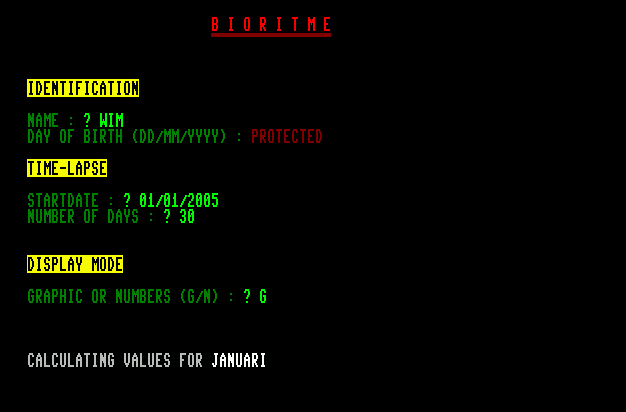
|
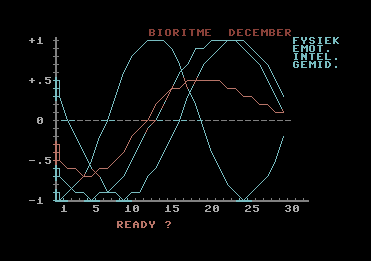 | 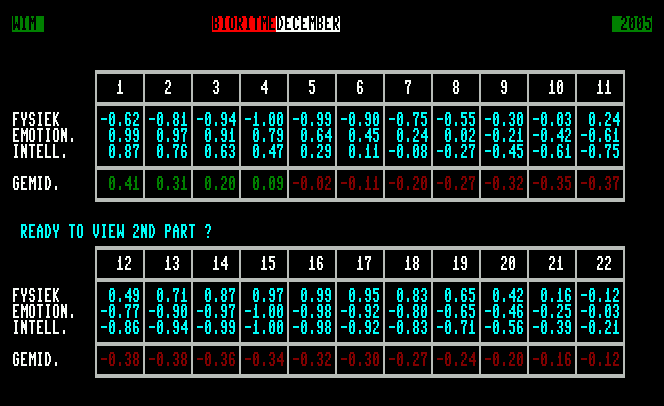
|
Actually written by my brother, but probably the first (1986) actually useful program written. The "commodore" heading on the title screen was drawn on millimeter paper and then translated in "DRAW" instructions in BASIC...
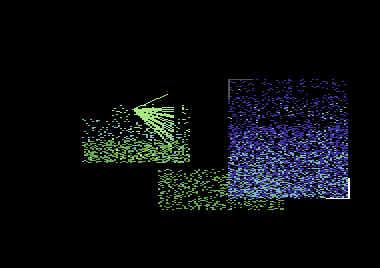
Altough quite a small program, this was the only thing I found adaquate to produce pseudo-"Defender of the Crown"-style pictures. The key feature was the ability to draw natural random textures. You can select a rectangle and let it place pixels at random in it until you have enough. Do that a couple of times with multiple colors on partially overlapping ranges and you get nice effects. Besides just placing pixes at random you could even place any custom shape (e.g. bricks) or (randomly) rotated lines or rectangles. Drawing ripples in water or leafs on a tree is piece of cake that way.

This was a master directory of all my diskettes, incl an easy way to launch programs without remembring whether to load"*",8 or ,8,1... Entirely written in assembler. Remember that this includes basic things like moving the mouse (or rather joystick) pointer and checking which button is pressed. Scrolling the listbox is extremly fast as it's plain copying bytes into video ram. This was I think my last project on the C128, it was never entirely finished.